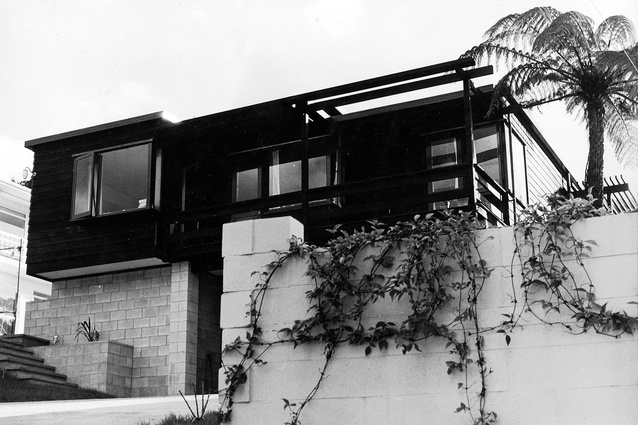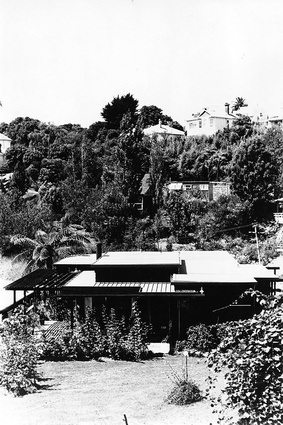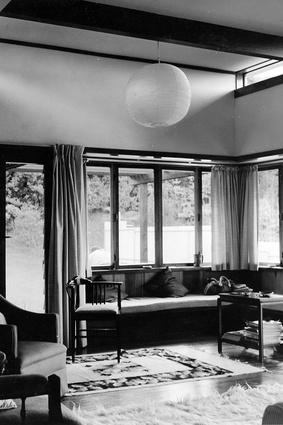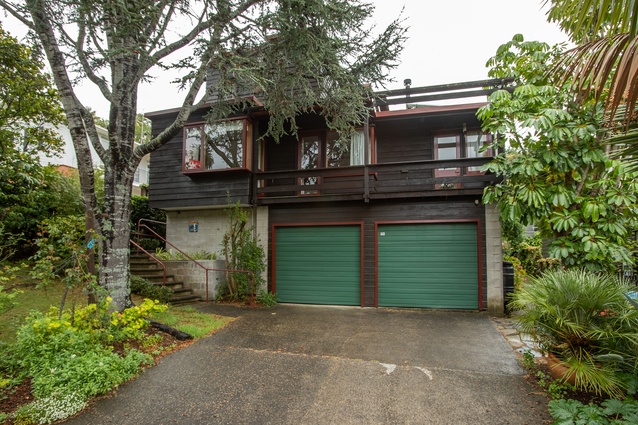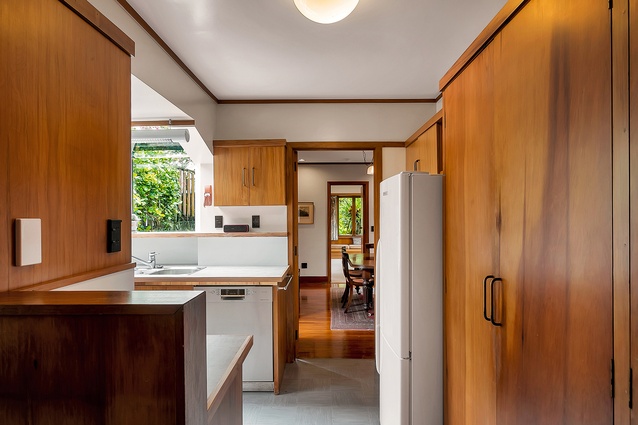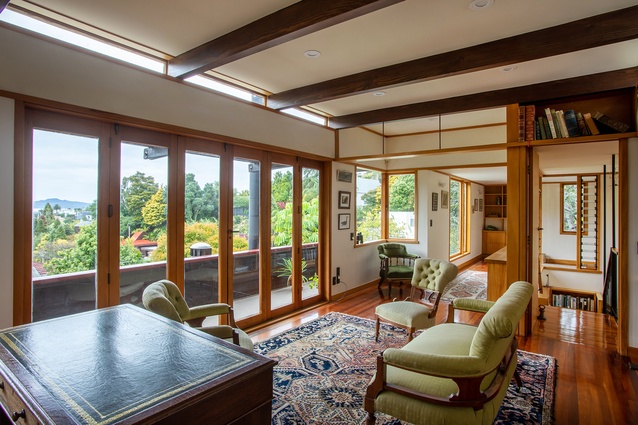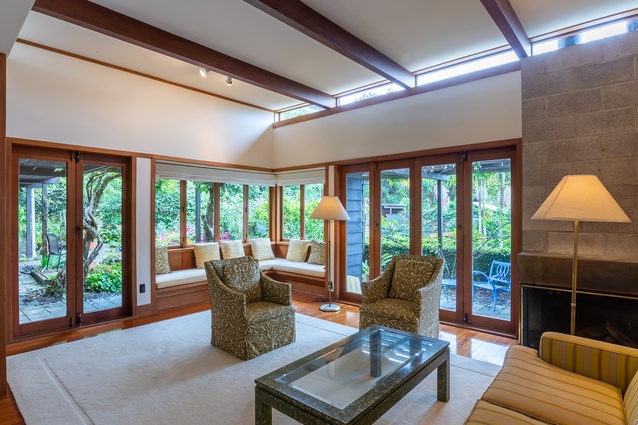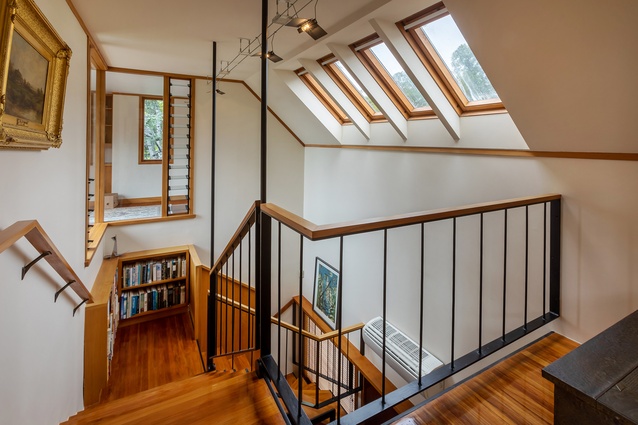Review: Vennell House site visit
This was an afternoon organised by the Thursday Lunch Group, a group of architects which has met regularly since 1991, as a celebration of one of Group Architects’ founder Bill Wilson’s innovative houses, the Vennell House.
Attendees included architects Marshall Cook and Claire Chambers, architectural historian Julia Gatley, former owner Kate Vennell, the new owners, friends, family and Wilson’s daughter, Hannah Sargeson. Old images, letters, original plans and architectural references within many publications, such as New Zealand Home & Building and Julia Gatley’s Group Architects, were laid out on view as recordings of the Vennell House, built in 1967.
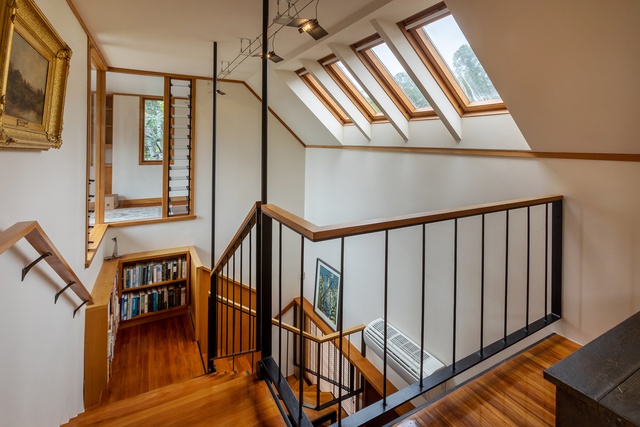
The house had had only one owner since Wilson was commissioned in 1966 by Adrian and Margaret Vennell and it has undergone five renovations. These have included additions, extensions and alterations required for a growing family’s needs, such as a larger kitchen with laundry attached, reconfigured bedrooms and a new bathroom, a bigger dining room and upstairs study plus a lift to enable the Vennells to reside in the home when mobility and frailty became issues. Chambers spoke to the renovations she was commissioned to undertake and described the way in which she studied the plans to take details, its unique architectural language and similar spatial qualities into her drawings of new spaces while aiming to maintain the integrity of Wilson’s design.
Gatley gave an overview of the overall context in which the Vennell House sat in the oeuvre of the Group Architects and how Wilson’s earlier dwellings could be viewed and read within this home. She provided insight into his desire to design houses through an architecture that reflected New Zealand, with its unique climate and local conditions.
The Vennell House can be seen as anti-heroic, insofar as it is sited in the landscape and bush, and belongs in the natural environment, surrounded by native birdlife. The 1990 second-storey addition can be viewed from the street but the entrance to the home retains its original placement. The layout of the single-storey Wilson dwelling can largely still be seen throughout, albeit with a few additions, such as the cathedral-like dimensions of the entry with its open-tread rimu staircase, the lift and reconfigured bedrooms. The ‘opening up of the plan’ within the house can be read as part of Wilson’s continuing exploration in design and, here, the materials were of a better quality and building standard than they were in his later work, thanks to clients who were happy to pay for a jarrah floor and rimu timber and craftsmanship.
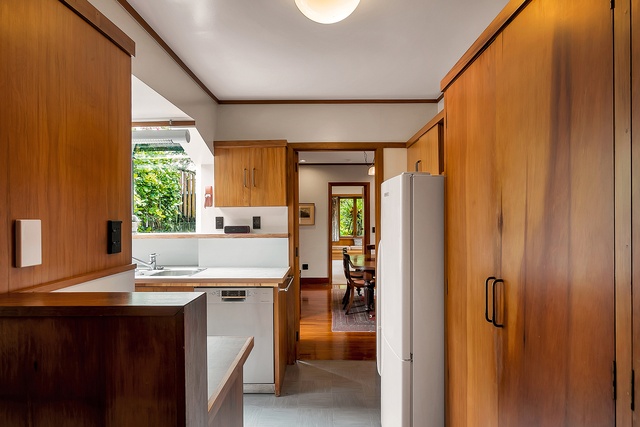
NZIA gold medal-winner Marshall Cook worked with Wilson and Ivan Juriss for five years, during the Group Architects’ final period in practice. He spoke about Wilson’s idea of rituals of domesticity and his pursuit of the permanent versus the ephemeral in his architectural expression. Cook noted that the anchor and heart of the Vennell House was the exposed, concrete-block fireplace, an element of permanence, to which the rest of the house attaches, and that this becomes the ephemeral, where life and connections are to be made.
He also spoke of the honest expressions of materials used, with wood and concrete elements. The original living room has rimu, Chelsea double-folding doors, which can be opened to give access to the outdoors. Elsewhere, a sliding door gives privacy to the living area but can be opened to reveal a connection to the dining room.
What became apparent through the talks was the way in which this modernist dwelling became not only a family home for the owners’ two daughters (Kate Vennell and Arabella Brawn) but, through the generosity of Margaret and Adrian as thoughtful hosts over the many years, it also welcomed architects, academics and friends, who became part of a much-loved, extended family. The new owners treasure the story and heritage of the house and plan to fill the house with as much fun, laughter and conversation as the Vennells did.

